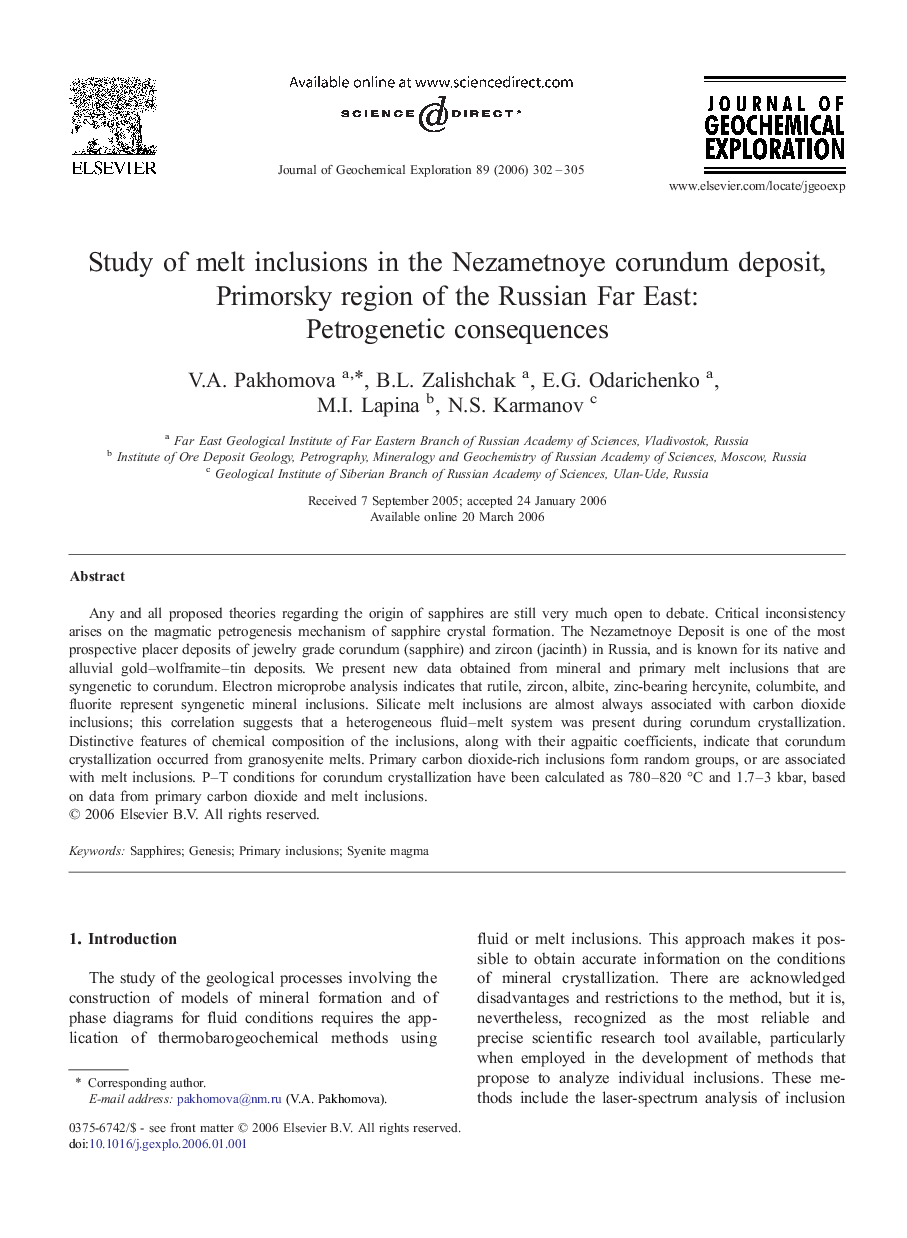| Article ID | Journal | Published Year | Pages | File Type |
|---|---|---|---|---|
| 4458475 | Journal of Geochemical Exploration | 2006 | 4 Pages |
Any and all proposed theories regarding the origin of sapphires are still very much open to debate. Critical inconsistency arises on the magmatic petrogenesis mechanism of sapphire crystal formation. The Nezametnoye Deposit is one of the most prospective placer deposits of jewelry grade corundum (sapphire) and zircon (jacinth) in Russia, and is known for its native and alluvial gold–wolframite–tin deposits. We present new data obtained from mineral and primary melt inclusions that are syngenetic to corundum. Electron microprobe analysis indicates that rutile, zircon, albite, zinc-bearing hercynite, columbite, and fluorite represent syngenetic mineral inclusions. Silicate melt inclusions are almost always associated with carbon dioxide inclusions; this correlation suggests that a heterogeneous fluid–melt system was present during corundum crystallization. Distinctive features of chemical composition of the inclusions, along with their agpaitic coefficients, indicate that corundum crystallization occurred from granosyenite melts. Primary carbon dioxide-rich inclusions form random groups, or are associated with melt inclusions. P–T conditions for corundum crystallization have been calculated as 780–820 °C and 1.7–3 kbar, based on data from primary carbon dioxide and melt inclusions.
